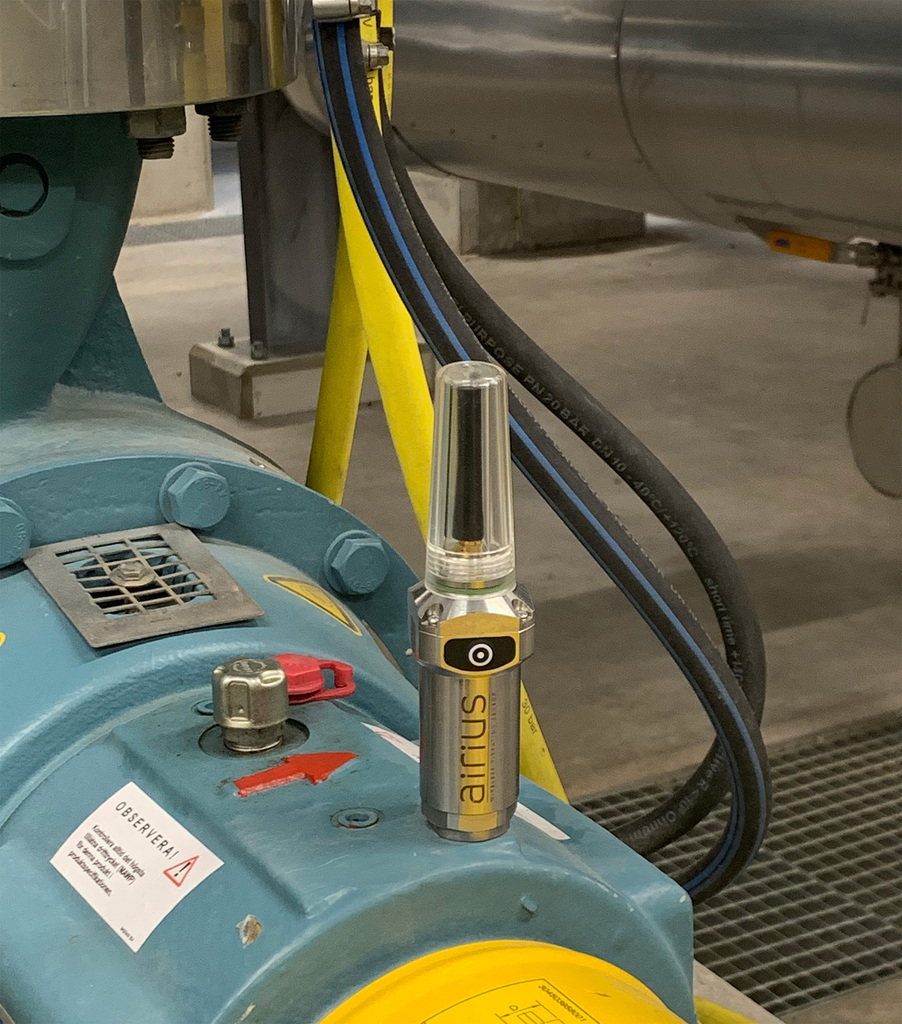

|
Edward Lowton
Editor |


|
| Home> | Efficient Maintenance | >Industry 4.0 | >Collaborative Innovation:Streamlining maintenance via digitisation |
Collaborative Innovation:Streamlining maintenance via digitisation
15 July 2024
Swedish pulp producer Södra Cell approached two of its suppliers in 2019 with a vision of leveraging digitalisation technologies as part of a successful project to transition to a fact-based, data-driven maintenance operation

AS PART of its efforts to leverage the benefits of digitalisation, Södra Cell aimed to pursue a more fact-based, data-driven maintenance operation.
Route-based measurement on thousands of measuring points at each of the three pulp mills was a time-consuming task for Södra Cell’s maintenance engineers. At the same time - due to the sheer number of machines - measurements were not carried out often enough to catch every potential machine problem nor provide enough data for confident decision-making.
That became the starting point for the idea of replacing manual measurement with automated data acquisition, which would relieve the maintenance engineers and provide an increased amount of machine condition data on which to base maintenance decisions. Online monitoring equipment with considerable amounts of cabling was not a relevant solution because the machines in question are dispersed over large mill areas. Moreover, they do not have the highest criticality rating and, hence, do not require continuous monitoring. Measuring devices with wireless communication thus emerged as the best option.
Bringing suppliers together for mutual benefit
Such a solution would require plant-wide, secure wireless network communication possibilities. But because of the extensive mill areas, building proprietary Wi-Fi networks was not feasible. However, Swedish telecom operator Telia already had cellular base stations installed at all three mills. Södra Cell, therefore, wanted to find out if a wireless vibration sensor might use cellular communication for data transmission and hence reached out to Telia and condition monitoring supplier SPM Instrument.
"Working with a Swedish condition monitoring supplier who is both big enough and small enough to be willing to listen to a customer’s ideas is a major advantage for us. So is the fact that the operating responsibility for the wireless communication network rests with the operator," said Thomas Håkansson, Södra Cell’s head of technology development. "We didn’t want to develop the solution ourselves but set the requirements and have the opportunity to test the product. Here, we benefitted from SPM's knowledge in both the manufacturing and function of sensors and Telia's knowledge in radio technology."
At the end of 2019, a decision was made on a joint development effort of a new version of the Airius wireless vibration sensor, which would use Telia's existing infrastructure at each pulp mill to communicate via the LTE-M cellular communication technology. Barely two years later, the first sensors in serial production were installed. At the time, this was the first wireless vibration sensor with LTE-M communication to hit the market.
LTE-M - a flexible choice for IoT connectivity
In choosing between the NB-IOT and LTE-M radio technology standards, Södra Cell opted for LTE- M - a solid choice for flexible and future-proof IoT connectivity. Advantages include the capacity to send not mere scalar values but spectrums and time signals on every transmission, low latency, and the possibility to update sensor firmware remotely.
However, the chosen technology has its drawbacks. To some extent, LTE-M’s faster transmission capacity comes at the expense of battery life. Achieving the desired battery life of four to five years requires adequate RSSI (received signal strength) values and a specific temperature range.
"The technology works; the current challenge is signal strength and battery life. We can't do anything about the ambient temperature impacting battery life on the sensors installed outdoors. The other cause of battery drainage is that despite the local base stations, signal strength is a problem in some areas of our plants. This is now being reviewed and supplemented for better coverage," explained Håkansson.
Streamlining data acquisition for increased output
The overall purpose of developing a wireless vibration sensor was to achieve higher machine availability and thus increase production - a constant quest in the industry. Södra Cell’s investment in the Airius sensors is weighed against the costs arising in case of breakdown and the cost of manual measurement in terms of time.
With the wireless sensors, measurement currently occurs once a day, enabling the detection of machine faults at an early stage and, hence, the opportunity to plan and carry out maintenance before a breakdown occurs. In this way, Södra Cell obtained a production increase of more than 4,000 tons in the first year alone.
Installed on rotating equipment that is less production-critical, such as screws and pumps, the Airius sensors are a complement to online monitoring, which is used to get more measurement data on critical machines.
"We’re using the wireless sensors sort of like a fishing net. It allows us to catch developing problems that we can confirm through supplementary measurements with handheld equipment," Håkansson continued. "The advantage is that we get more measurement data while avoiding our staff having to be near rotating machines. That’s a work environment issue. The downside might be that the measurements are not supplemented by human senses - sight, hearing, smell, etc., which can help give a clue as to whether or not something seems normal."
Södra Cell's vision for the future is that all objects not monitored online will have wireless monitoring, thus allowing the maintenance departments to focus more on objects that may have budding problems. In the long run, Södra Cell anticipates this will enable further reliability improvements.
Successful supplier collaboration
Driven by digitalisation, the Airius LTE-M development project is a shining example of successful collaboration between Swedish industrial and technology companies.
"Not all digitalisation projects take off and turn into something functional and usable. Many ideas and projects never make it past examples, proof-of-concepts, and testing. In this case, we took our idea to the next step and got it flying together with Telia and SPM, and we are using the solution on a large scale," Håkansson concluded.
"That makes this development effort stand out from many others. Daring to try something new requires financial strength and a certain amount of courage. We set up new job positions, changed how we work, and believed in this."
So far, Södra Cell has installed and connected approximately two thousand sensors in an even distribution between its three pulp mills. A further one thousand sensors have been ordered and partially delivered.
For more information:
https://www.spminstrument.co.uk
Tel: +44 1706 835331
- Monitoring system warns of early-stage faults
- Condition monitoring solution for compact machinery
- Condition monitoring equipment for Severn Trent Water
- Monitoring vibration
- Predicting faults all over the world
- SPM Instrument launches Intellinova® Parallel MB
- SPM Instrument launches revolutionary measuring technique for condition monitoring
- Three years’ pre-warning time
- Easy shaft alignment
- International management meeting
- Technology and Open Standard data enabling smart maintenance
- Broadband sensors: Pinpointing leaks in compressed air systems
- Mechanised welding, cutting and Industry 4.0
- Tomorrow’s tech is here today
- Investment in infrastructure, innovation and people
- Getting to 4.0 – one hard-won gain at a time
- Digital transformation in the chemical industry: White paper
- Digital industry around the world
- Guidance via AR
- How machine learning is transforming predictive maintenance


















